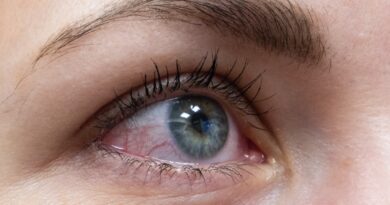What is Tripophobia and How to Recover from Tripophobia
What is tripophobia? Tripophobia, or the fear of travel, is an anxiety disorder that affects individuals worldwide and can cause severe impairment of day-to-day functioning.
Although it is quite normal to experience anxiety when traveling alone or in new places, with the right treatment, you can overcome tripophobia and enjoy going on vacation with your friends and family once again. This article will help you understand more about tripophobia and how to overcome it.
Contents
What is Tripophobia?
The word tripophobia is simply a combination of two words, Tripo (meaning fear) and phobia (meaning fear of something or an event). In relation to both, tripophobia is defined as an intense fear of traveling. The fear may be triggered by either a fear of vehicles in general or by specific situations.
Whether you are living with an existing anxiety disorder such as agoraphobia or have developed a stress-related case that’s affecting your life on a day-to-day basis, it is important to understand what causes your condition in order to start working toward recovery.
What Triggers Your Fear?
if you live with a severe case of tripophobia , then any mention or suggestion regarding travel can trigger a negative response. However, some people who suffer from mild cases might find they are able to travel quite easily but experience symptoms while doing so. Symptoms vary according to each individual but common experiences include increased heart rate, nausea and vomiting, sweating, muscle tension and dizziness.
While these occurrences aren’t serious for most people; for those who suffer from extreme cases of tripophobia , even thinking about travel can lead to panic attacks. If any triggering cause is identified then it’s possible for sufferers to take steps towards recovery sooner rather than later.
Causes of Tripophobia
Although it’s hard to pinpoint a single cause of tripophobia, it could be related to traumatic experiences or phobias you may have experienced in your past. Tripophobia can also be caused by substance abuse or if you’ve been put into an uncomfortable situation where there was too much stimuli (such as too many people). Identifying your root cause can help you start on a path of recovery. The first step in recovering from tripophobia is knowing what it means and how it affects your life.
Symptoms of Tripophobia
The symptoms of tripophobia, or an intense fear of being in places where help cannot be found, include:
- Feeling like you’re trapped: If you have Tripophobia, you might feel as if there’s no way out. Symptoms can include feeling claustrophobic (like someone is pressing on your chest), having a panic attack, feeling nauseous, shaking or trembling uncontrollably, crying uncontrollably and hyperventilating.
- Experiencing a panic attack: A panic attack involves three stages: fear that something bad will happen; belief that one won’t be able to cope with what happens; and physical changes such as increased heart rate.
To treat tripophobia, talk therapy or exposure therapy can be used. In exposure therapy, symptoms are intentionally provoked in order to overcome fears. An important part of successful treatment is setting realistic goals for what sufferers are ready to tackle at a given time.
How to recover from tripophobia
Having a phobia makes you want to get help from doctors. To recover from tripophobia, go to your family doctor or a mental health provider. They will refer you to a therapist who specializes in anxiety disorders. The therapist will help you cope with your symptoms using cognitive behavioral therapy (CBT). This means learning how to change your thoughts to better control your anxiety, rather than avoiding it all together.
This type of psychotherapy takes a while: on average, six to nine months of CBT is recommended for panic disorder and OCD combined. Although results can be seen as early as two weeks into treatment, full recovery can take several months—so stick with it!
Final Thoughts!
If you want to recover from tripophobia, there are a lot of different things you can do in order to make that happen. By following a plan of action, such as what we’ve outlined above, you’ll be well on your way to overcoming it for good. One thing you need to remember when recovering from tripophobia is that recovery isn’t always an easy process – what works for one person may not work for another. Stay positive, stick with your plan of action, and have fun. Don’t give up!





